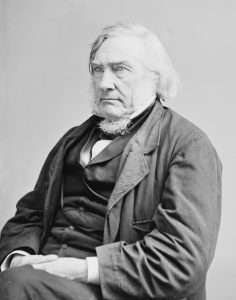
Shortly after the Democratic National Convention ended, the presidential transition period began, with both major party candidates quickly getting ready to govern should they win. To best appreciate how this secretive but essential part of the campaign may transpire, it’s worth revisiting what happened four years ago, before and after the election.
In January 2021, when Yo-Yo Ma played the cello in front of his computer for Joe Biden’s inauguration, members of the Biden-Harris transition team watched on theirs, exhausted and needing a few moments of serenity. Nearly all were volunteers, many still working their full-time jobs, squeezing in time on the transition when they first woke up or late at night. This was peak COVID, with thousands dying each day and the outgoing president, Donald Trump, refusing to relinquish control of the country after losing the election.
What most transition team members remembered, though, weren’t the celebrities invited to perform. Instead, it was the occasional chance to hear from one of those heading to the White House. Gina McCarthy, soon to be the White House Climate Advisor, spoke, as did future Chief of Staff Ron Klain and even Vice President-elect Kamala Harris.
In this way, the 2020-21 Biden-Harris transition, unusual in so many other ways, was typical. While winning campaigns are defined by large crowds, glitz, and glamor, effective transitions are staid and wonky, obsessed with understanding the state of the bureaucracy and deciding on little-known federal jobs, all with barely a public peep from the transition team.
This is not to minimize these efforts: transition work is critically important. Federal law compels the Biden administration to begin transition planning a full year before the election and ramp things up within three business days after the conventions. In May, the White House established transition councils and named agency transition leads. The law also mandates that planning happens in cooperation with all major candidates. Trump’s chosen transition chairs, Linda McMahon and Howard Lutnick, represent the GOP nominee. (New additions to the Trump transition team are the controversial Democratic Party defectors Robert F. Kennedy, Jr and Tulsi Gabbard.) Ambassador Yohannes Abraham, who directed the Biden-Harris team last time, is back for a second tour of duty.
Trump and Harris’s transition teams will be housed at the General Services Administration offices in D.C., which is more than a little awkward. But it’s necessary because when the new president is elected in November, hundreds of appointments will have to be made, the problems faced by dozens of federal agencies understood, and a complex policy agenda prepared–all in under 80 days from the election to the inauguration. Even opponents of Trump need to understand that failing to do this is potentially disastrous.
Several members of Biden’s 2020 transition team gave me a glimpse of their daily lives and explained why they persevered through such trying circumstances.
Most volunteers reviewed resumes, wrote detailed briefing papers, and debated the pros and cons of thousands of choices President-elect Biden and a small inner circle ultimately had to make.
“It’s a Model U.N.,” said one person I interviewed who focused on domestic policy in 2020, “You’re not making any decisions.” Instead, because so many on the transition team join the administration, they “carry the knowledge and thinking that was done before the election and after the election into the administration.”
Understanding this dimension of the transition period, selecting leaders who knew how to build and nurture teams mattered a lot. Cecilia Muñoz, for instance, was a known team-builder who was chosen to head up domestic policy for Joe Biden and Kamala Harris. She’d been at the Obama White House and, in 2020, was on leave from the progressive think tank New America.
Even for those working closely with Muñoz, most have yet to meet her in person. “Cecilia Muñoz, who I consider a friend and mentor and amazing boss,” said one person, “she probably wouldn’t recognize me.” Some people working on the transition weren’t even residing in the U.S., and few visited the official transition offices at the GSA.
Knowing this, Muñoz organized virtual workout sessions with her team members each afternoon. An assistant, Matt Groom, played the greatest hits of the 70s and 80s, then some Ke$ha and Drake, as the team stretched. Once a week, Muñoz asked the team to name one fun thing they’d done the past weekend.
Still, COVID-19 was raging, with rising death counts, widespread sickness, and isolating remote work harming team morale. The GSA was an even graver problem for the transition team; the agency refused to ascertain the election results and grant the team access to federal funds for the first three weeks of the transition. Jennifer Aniston, Robert DeNiro, and other major Democratic donors chipped in to make up for the needed money. The GSA forbade meetings with the outgoing Trump administration through much of November, depriving the team of updated information about the government’s response to COVID.
Once the GSA conceded that Biden and Harris had won the election, cooperation increased, but not across the board. President-elect Biden concluded that his team confronted unnecessary roadblocks. Meetings were complex to schedule or canceled at the last minute, and when information was shared, it was done begrudgingly.
Further complicating was an executive order signed late in 2020 by Trump, dubbed Schedule F, reclassifying thousands of civil servants as political appointees, making them vulnerable to dismissal without recourse. Senior bureaucrats, who had cooperated with incoming Republican and Democratic transition teams in the past, worried that aiding the Biden-Harris team would end their careers. “Trump was threatening to fight to turn them all into Schedule F and fire them all,” said one person on the team.
Right now, the Heritage Foundation’s plans for a transition to a conservative president in 2024—you may have heard of it, it’s called “Project 2025”— rest on resurrecting Schedule F. It’s a potential threat to cooperation in the future.
Although the January 6, 2021, attack on the Capitol and coordinated attempt to overturn the results of the election have rightfully generated the most attention, the mundane failures of the transition process were no less serious. Long-standing traditions of cooperation, reinforced by Congress each time it amends the Presidential Transition Act of 1963, were ignored too often beginning in the fall of 2020, particularly in high-priority issues like national security and the budget.
“Military officials, they were forthcoming, but any time we were talking to a Trump appointee…I didn’t feel they were all that forthcoming,” said someone focused on defense issues.
Despite the poor cooperation from the Trump administration, the work of the Biden-Harris transition team was a resounding success. A major domestic terror incident didn’t occur as had happened two decades earlier. (The delayed 2000 transition, according to the 9/11 Commission, “hampered the new administration in identifying, recruiting, clearing, and obtaining Senate confirmation of key appointees.”) After Biden’s inauguration, the economy recovered, and the pandemic subsided, all due in some part to the work of the hundreds of transition volunteers who had to prepare for Day 1.
Nevertheless, the foolishness of taking such risks with power transfer cannot be forgotten. Cooperation must be the norm, whether the next transition is to Harris or Trump. And teamwork should span the incoming and outgoing administrations. The preparation for a potential transition out of office, already underway in GSA Administrator Robin Carnahan’s office, should be thorough and fully comply with what Congress has mandated. And, as much as promising to accept the results of the next election, every candidate should pledge to abide by a cooperative transition with no unnecessary roadblocks.
It’s peculiar to suggest such a thing when Donald Trump is the Republican challenger in the race. Twice, he’s done the exact opposite: failing to cooperate with the outgoing Obama administration in 2016 and failing again with the incoming Biden administration in 2020. Nonetheless, the country has no other option than to promote stability, plan carefully, and follow the law while being ready for the possibility of something very different.
The post No Transition Team Should Confront the Roadblocks Faced in 2020 appeared first on Washington Monthly.


 3 months ago
9
3 months ago
9 









 Bengali (Bangladesh) ·
Bengali (Bangladesh) ·  English (United States) ·
English (United States) ·